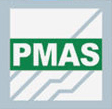|

Wind Generators
Product Details:
Product Description
Wind Generators
With the development and progress, Wind turbine has become the most preferred equipment with huge potential for generating energy in the world as one kind of renewable and green energy. The wind turbine is an equipment to convert wind energy into electric power which can be stored into storage battery banks. It can be widely used in windy areas and without normal energy supply from any power system .It is capable of providing power for lighting, TV, telecommunication equipment and so on. It is especially suitable for far flung areas where Grid supply is not available or very costly to bring power to that location, also suitable for small users in villages, farm houses and open spaces in urban areas. The unit is mainly composed of wind rotor, generator, tower, electric controller and inverter, storage batteries, electric cable, etc
Johns have planned to venture into harnessing this source of energy for small users in villages, farm houses and open spaces in urban areas. The conventional wind turbine looks like a three blade giant fan at the top of tall pole/structure standing in an open area where wind is freely available without any hindrances and obstacles. This appearance simply implies that wind generator is not possible in an urban location and that is what we have been seeing till date. These Giant wind Mills can be seen in coastal areas, deserts and on hill tops. We have ventured into wind generator having vertical shaft and can be used in open spaces in urban areas.
For an Urban location, the main difference between vertical axis wind turbines (VAWT) and horizontal axis wind turbines (HAWT) is their response to turbulent winds. A VAWT is better suited for Urban locations, where other buildings and trees cause the wind to be more turbulent (gusty, with severe direction changes). Both types of home wind turbine will function better with smooth air, but a VAWT does not need to rotate into the wind like a HAWT. HAWT tend to produce more power with a smaller size, but historically have produced more noise. Modern designs have greatly reduced the amount of noise produced. You can normally mount a HAWT higher and thus get access to faster and smoother air (and therefore more power). Guyed towers, take a lot of physical space.
Conventional wisdom is that wind turbines are big structures, with long blades sitting on tall towers. Taller the tower and longer the blade, more power you get. We even have an equation, known to practitioners in the field, which says that we actually get the square of the diameter of the blades, which can be pretty significant (i.e. if you double the length of the blades, you quadruple the theoretical energy you can get from the wind). You are much better off building one big wind turbine, rather than two smaller ones that would be half the size.
However, unless we reach significantly higher fossil fuel prices (which is entirely possible, and according to a growing number of people – inevitable), standard wind turbines are reaching an economic limit in how big you can make them. The taller you make the tower, the wider it gets, and now we start getting into much higher construction costs. It appears that it may still be worthwhile for offshore projects due to the higher winds, though there are no lack of issues with offshore projects either.
The other critical part of the wind power equation that is at the heart of wind power is namely wind speed. Power generated from the wind is based on the wind speed cubed. If you double the wind speed you get a whopping eight times the theoretical power. This is the other reason why manufacturers are trying to make taller and taller towers. The wind is stronger the higher up you go.
With the world wide interest and demand for wind power a number of inventors, companies and research groups asked:
"How do we get more wind power?"
"We go higher"
"Okay. How do we get higher?"
"We get rid of the tower, and fly something to much higher altitudes."
"Hmmm. How do we do that?"
It turns out there are several technologies and strategies to get something up into the air, and the race has begun with a variety of approaches and companies
It is likely that there will be more than one solution, but whether they will be able to compete with existing wind turbines and which approach will be most successful still remains to be seen.
Johns is aiming at wind turbine which shall be
- Noisless
- Robust
- Automatic start up at 3m/s
- Design (eye catcher also for advertising purposes)
- Independent from the wind direction
- Multifunctional,
GST : 08AACHS1722F1ZF
|
|
|
 |
PROCESS & MACHINES AUTOMATION SYSTEMS
All Rights Reserved.(Terms of Use) Developed and Managed by Infocom Network Private Limited. |

